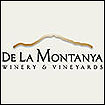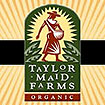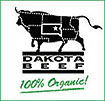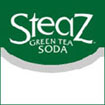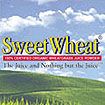Choosing a Chocolate That's Right for
You
Definitions
From the Chocolate Manufacturers Association
Help Consumers
Understand the Growing Language of Chocolate
VIENNA,
Va., Dec. 8 /PRNewswire/ -- As
consumers face a large and expanding selection
of premium/specialty chocolates and many
new choices the Chocolate Manufacturers
Association (CMA) has put together an
online consumers' guide, "Making
Sense of % Cacao." The information
is designed to help chocolate lovers better
understand the cacao or cocoa percentage
labels that appear on a growing number
of chocolate and cocoa products.
The term '% cacao' refers to the total
percentage of ingredients (by weight)
which come from the cacao bean (or cocoa
bean) such as chocolate liquor, cocoa
butter, and cocoa powder found in a chocolate
product. The term is being increasingly
used in connection with premium chocolates
-- including dark chocolate.
"The '% cacao' number is a key part
of what consumers should consider when
searching for specific flavor intensity,
whether eating a bar of chocolate or consuming
it in other forms such as baking and drinking,"
said Dr. Leah Porter, vice president of
the American Cocoa Research Institute
(ACRI), the research arm of the CMA. "In
general, the '% cacao' number can guide
you towards milder or deeper chocolate
flavor intensity, depending on your taste
preferences or the needs of your recipe."
'% Cacao' - Characteristics of
Chocolate
-- The Higher the Cacao Percentage,
the Greater the Flavor Intensity: In general,
a higher '% cacao' means a more intense
chocolate flavor. For example, the U.S.
cacao standards require a milk chocolate
to contain at least 10% chocolate liquor.
Semisweet or bittersweet chocolate must
contain at least 35% chocolate liquor,
resulting in a higher '% cacao' and a
more intense chocolate flavor. White chocolate
has a very different flavor profile because
its entire '% cacao' comes from only cocoa
butter.
-- Higher Percentage Equals Less
Sweetness: A higher '% cacao'
means less added sugar. For example, a
72% cacao dark chocolate has less sugar
than a 60% cacao dark chocolate. Unsweetened
baking chocolate is a 100% cacao product
with no added sugar, and is very bitter.
-- Cacao Percentage and Flavanol
Content -- Not Always Related:
Much of the recent positive news from
the health research community is linked
to the presence of certain flavanol compounds
in chocolate and cocoa products. While
these compounds are associated with the
non-fat cocoa solids, actual levels of
flavanol content may fluctuate widely
depending upon recipe, cocoa bean selection,
subsequent processing practices, and storage
& handling conditions. Therefore,
'% cacao' may not necessarily indicate
the flavanol content of chocolates.
Key
Terms
The U.S. Food and Drug Administration
(FDA) has established Standards of Identity
(food standards that ensure consumers
get what they expect when purchasing products)
to designate the names of the cacao products
and the percentage of key ingredients
that must be present.
In response to consumer interest, many
chocolate manufacturers are now referencing
these terms on their products' labels.
Key terms include:
Cacao -- Refers to the
bean, which is the source of the cacao
components of chocolate liquor, cocoa
butter, and cocoa powder.
Chocolate Liquor -- Produced
by grinding the cacao bean nib (or center)
to a smooth, liquid state. In the U.S.,
chocolate liquor is also called chocolate,
unsweetened chocolate, baking chocolate,
or bitter chocolate. In Canada and Europe,
other names include cocoa (cacao) mass
and cocoa liquor.
Cocoa Butter -- The fat
naturally present in cacao beans that
melts at body temperature and gives chocolate
its unique mouth feel. The amount of cocoa
butter in cacao beans typically ranges
from 50 to 60%.
Cocoa or Cocoa Powder
-- The product made by removing part of
the fat (i.e., cocoa butter) from the
cocoa bean and grinding the remaining
material to a powder. Under U.S. regulations,
"cocoa" and "cocoa powder"
can be used synonymously.
Some products in the U.S. use the term
'% cocoa' interchangeably with '% cacao.'
The '% cocoa' on these products really
is intended to refer to the total content
of ingredients from cacao, not just the
amount of cocoa powder. This use of the
term '% cocoa' may create some confusion
for consumers.
"To minimize confusion in the market
among consumers, we encourage use of the
term "% cacao" rather than '%
cocoa,'" added Dr. Porter.
Background of Cacao and Cocoa
The use of '% cacao' originates in Europe
where chocolates must be labeled to indicate
the minimum total cocoa solids. 'Cocoa
solids' are often stated as '% Cacao'
(France, Spain), '% Kakao' (Germany),
or '% Cocoa' (UK).
In the U.S., chocolate manufacturers are
not required to declare the '% cacao.'
However, due to the increased consumer
interest in learning more about chocolate,
some manufacturers are choosing to provide
more information that enhances the chocolate
experience.
"Similar to the surge in consumer
interest in origin and taste experiences
that the wine and coffee industries have
seen, so too has people's curiosity evolved
about their chocolate," added Lynn
Bragg, CMA President. "We wanted
to provide consumers with useful information
for a greater appreciation of this trend,
as cacao terminology becomes increasingly
more important."
About the Chocolate Manufacturers
Association
The Chocolate Manufacturers Association
(CMA) has served as the premier trade
group for manufacturers and distributors
of cocoa and chocolate products in the
United States since 1923. The association
was founded to fund and administer research,
promote chocolate to the general public
and serve as an advocate of the industry
before Congress and government agencies.
CMA's mission is to serve as the voice
of the American chocolate industry and
through research, education and public
information, works to ensure a continued
supply of cocoa and consumption of high
value and quality chocolate products for
the American people. CMA members represent
over 90% of the chocolate processed in
the United States. For more information
on CMA visit
http://www.chocolateusa.org.
EDITOR'S
NOTE: To view a full chocolate glossary
of terms and chocolate processing diagram,
please visit CMA's Web site: http://www.chocolateusa.org
Chocolate
Manufacturers Association
Contact: Dr. Leah Porter
+1-703-790-5011
leah.porter@chocolateusa.org
Fleishman-Hillard
Contact: Stacey Kerans of
+1-202-828-8859
keranss@fleishman.com
PR Newswire Association LLC,
Distribution Services Department,
810
7th Avenue, New York, NY 10019





